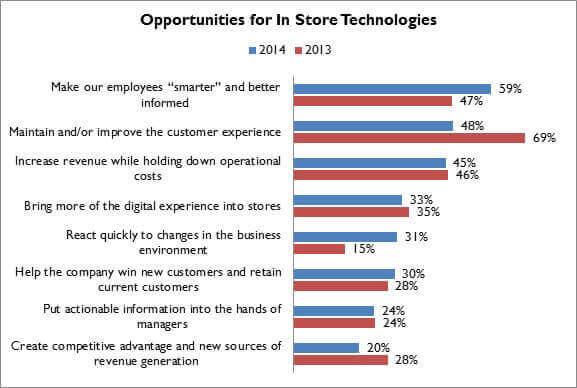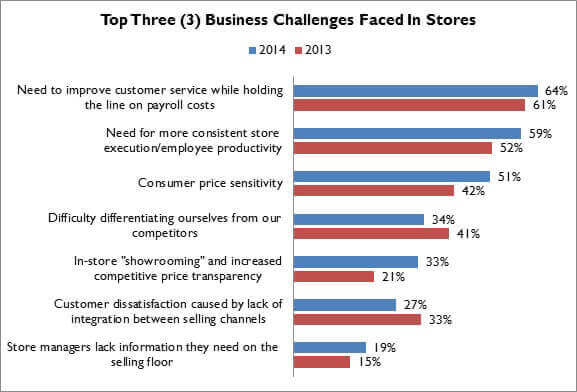Stores: Not Just Popular with Shoppers
Hard to believe, but our annual Store Report was published 90 days ago. And in that brief three months, it’s become one of the most widely-read and successful reports we’ve published recently. More than 715 people have downloaded it in those first 90 days alone, but far more importantly; the number of globally powerful retailers among them is staggering.
With that in mind, despite the growth of online channels (and the fact that more than 85% of sales still complete in store) how could anyone be talking about the death of stores? Further, if you have stores, how could you not be talking about the need to rejuvenate those stores and return them to relevance?
It is, of course, an exquisite irony that the very tools and techniques retailers use to create a compelling online experience, all based on liberated self-service, have brought only marginal success in stores. The reason is simple: People don’t just shop in stores to touch and feel products – they also expect assistance from human beings. And retailers are recognizing that those human beings, their employees, are woefully ill-equipped to provide that assistance.
While last year, retailers were fixated on the end goal, maintaining or improving the customer experience, this year, they most frequently cite making employees “smarter ” and better informed as a top-three value in-store technologies bring to the table.
Figure 1: Improving Employee Knowledge Grows in Importance

Source: RSR Research, June 2014
While showrooming and omni-channel pressures dominate media conversations, fundamental and traditional pressures riseto the top of store-based issues (Figure 2). Figure 2: Traditional Pressures Dominate

Source: RSR Research, June 2014
When asked to choose their top three business challenges, retailers return to the basics:
- Stores must operate within a pretty fixed budget. Somehow customer service must improve without driving costs through the roof;
- Whether a retailer has five or five thousand stores, those stores must meet customer expectations consistently. Employees must be productive, and floor sets must have similar, with a somewhat localized look and feel;
- Consumer price sensitivity continues to rise. It’s easy to call this a “showrooming problem ” but in fact, the shopper has been trained by retailers to look for low prices in virtually every medium, from mass market advertisements and FSIs to personalized emails and notes on social networks.
For better or worse, this training has been successful, at least from the retailers’ perspective. So even though regional supermarkets like Publix continue to outperform Walmart in the face of brutal price-focused TV ads, retailers continue their drumbeats, and consumers respond. Only history will tell which came first, the price sensitivity chicken or the price-oriented advertising egg. Data from RSR’s Pricing Benchmark tells the same story. Retailers are engaged in a race to the bottom.
This is a conversation we’re going to have to be engaged in for many years to come.
